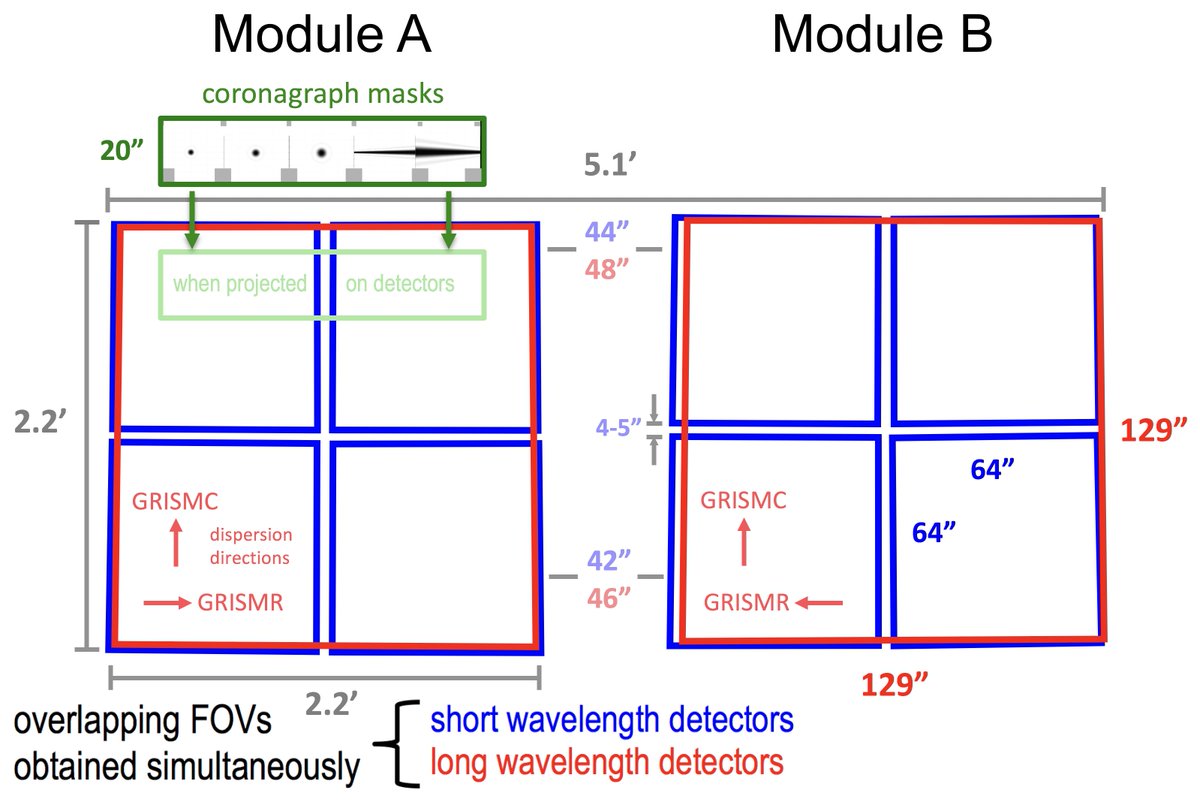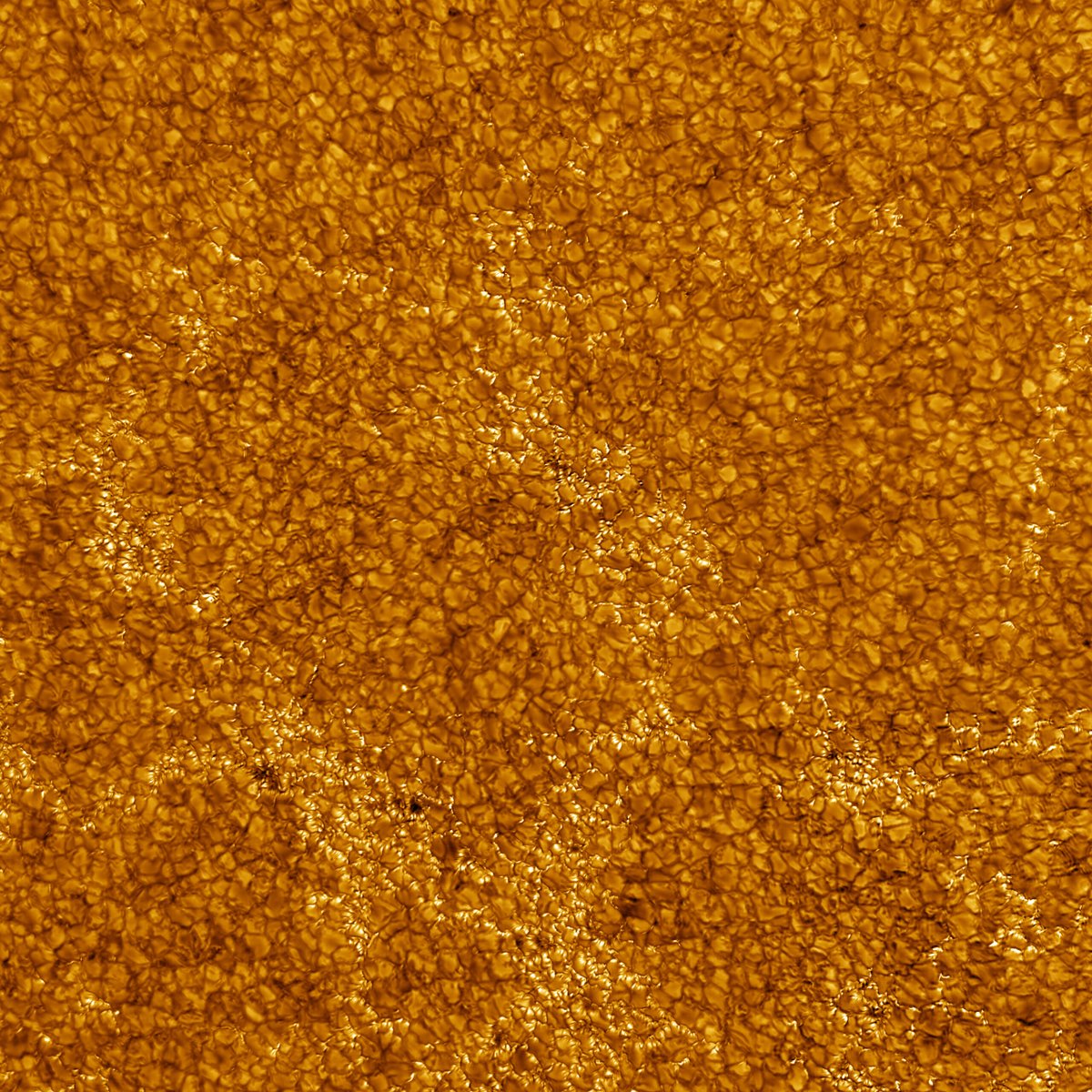
Here’s the order of play for my #JWST look at the Orion Nebula & Trapezium Cluster over the coming week.
35 hours of observations spread over 6 days, generating ~3,500 images & ~140GB of data.
Probably worth a bit of background explanation.
1/
35 hours of observations spread over 6 days, generating ~3,500 images & ~140GB of data.
Probably worth a bit of background explanation.
1/
https://twitter.com/markmccaughrean/status/1573898768801562624

First things first.
Most astronomers would think of Orion as something to be observed in December. That's when it's opposite the Sun in the sky & is visible most of the night, culminating around midnight. I've spent many December nights observing Orion from Hawai'i & Chile.
2/
Most astronomers would think of Orion as something to be observed in December. That's when it's opposite the Sun in the sky & is visible most of the night, culminating around midnight. I've spent many December nights observing Orion from Hawai'i & Chile.
2/
But things are different for #JWST, in orbit around the Sun-Earth L2 point, 1.5 million km from here, not tied to the rotation our planet.
And because of the design of the observatory, #JWST can't actually look in the anti-Sun direction to where Orion is in December.
3/
And because of the design of the observatory, #JWST can't actually look in the anti-Sun direction to where Orion is in December.
3/
Hidden behind its tennis court-sized sunshield, which allows it to cool to -233ºC & become a super-sensitive IR observatory, the #JWST telescope essentially points orthogonal to the Sun line, albeit with some 50º of adjustment possible.
4/
4/

By spinning the whole observatory around the Sun line, #JWST can sweep out an annulus on the celestial sphere, able to cover about 40% of the whole sky at any given time (taking into account that 50º pitch capability).
5/
5/

As #JWST orbits L2 & as L2 follows Earth around the Sun during the year, the annulus that #JWST can observe also changes, meaning the whole sky can be seen (except the parts interior to L2, so no observations of the Moon, Earth, Venus, & Mercury).
Credit: Northrop-Grumman
6/
Credit: Northrop-Grumman
6/
What does that mean for the observability of objects on the sky?
The plane of Earth's orbit around the Sun is called the ecliptic. The points directly above & below that plane are called the ecliptic poles.
Credit: Wikipedia / Tfr000
en.wikipedia.org/wiki/Ecliptic
7/
The plane of Earth's orbit around the Sun is called the ecliptic. The points directly above & below that plane are called the ecliptic poles.
Credit: Wikipedia / Tfr000
en.wikipedia.org/wiki/Ecliptic
7/

Given its geometry, #JWST can always point "up" & "down" & observe the north & south ecliptic poles all year round. Small regions around the poles are called "continuous viewing zones", always accessible for observations.
8/
jwst-docs.stsci.edu/jwst-observato…
8/
jwst-docs.stsci.edu/jwst-observato…

That's great if your object is in a CVZ, but for many other targets, the timing is more restrictive.
Orion is one of those, as it lies ~7º from the ecliptic.
For that, we have to wait until Orion is roughly orthogonal to the #JWST Sun line & then roll the telescope there.
9/
Orion is one of those, as it lies ~7º from the ecliptic.
For that, we have to wait until Orion is roughly orthogonal to the #JWST Sun line & then roll the telescope there.
9/
If you think about it, that happens three months either side of December, when Orion is in the anti-Sun direction, along the #JWST Sun line.
(90º/360º = 1/4, 1/4 of a year is 3 months).
So with #JWST, Orion is observable in ~September & March each year.
10/
(90º/360º = 1/4, 1/4 of a year is 3 months).
So with #JWST, Orion is observable in ~September & March each year.
10/
Which is why Christmas has come early & my guaranteed-time observations of Orion are happening this coming week 🎅
So, what exactly are we observing & why will it take a week to get "just" 35 hours of observations with #JWST?
11/
So, what exactly are we observing & why will it take a week to get "just" 35 hours of observations with #JWST?
11/
The basic reason is data volume: #JWST's NIRCam has lots of detectors & can generate lots of data quickly, filling up the 68GB of space-hardened solid state memory. That usually gets downlinked in two 4-hr periods per day, each up to 28GB.
12/
jwst-docs.stsci.edu/jwst-observato…
12/
jwst-docs.stsci.edu/jwst-observato…
So my programme, which is taking *lots* of images, needs to be spread out to allow the data to be downloaded: in the meantime, other programmes generating less data will keep #JWST busy. The scheduling folk at STScI are masters of this & carefully balance mission resources.
13/
13/
How much data? Well, NIRCam on #JWST has two separate modules capable of observing the sky simultaneously, with a gap between them.
jwst-docs.stsci.edu/jwst-near-infr…
14/
jwst-docs.stsci.edu/jwst-near-infr…
14/

Each module has a short-wavelength channel with four 2048x2048 pixel detectors, again with small gaps, & a long-wavelength channel with a single 2048x2048 pixel detector covering the same field.
So (4 SW + 1 LW) x 2 modules = 10 detectors running simultaneously.
15/
So (4 SW + 1 LW) x 2 modules = 10 detectors running simultaneously.
15/
Because of the gaps between the modules & the 4 SW detectors, you need to construct a pattern of telescope positions to create a mosaic without any gaps. This typically involves a heirarchical set of telescope pointings, primary, & sub-dithers.
16/
jwst-docs.stsci.edu/jwst-near-infr…
16/
jwst-docs.stsci.edu/jwst-near-infr…

I'm not using a fully pre-canned sequence for my programme: I'm using the pattern called INTRAMODULEX for primary dithers to fill the gaps between the four SW detctors & then a custom mosaic to fill the bigger inter-module gaps & map the core of Orion.
17/
17/

(If you're still with me at this point, I applaud you – making observations with #JWST is very definitely not just "taking snaps" & the complexity even in imaging mode can be fearsome. And that's just the observing – the data reduction & analysis is a whole other thing.)
18/
18/
My mosaic uses 5x2 #JWST pointings. With the telescope oriented with the two NIRCam modules aligned in dec (N-S), I then scan out 5 just-overlapping positions in RA (E-W) & 2 well-overlapping positions N-S to cover the inter-module gap. And at each position, 6 dithers.
19/
19/

At mosaic & dither positions, we'll be taking images through 10 different filters, 5 in the SW channel & 5 in the LW channel. These are designed to discover very-low mass brown dwarfs & planetary mass objects, as well as study jets, outflows, & circumstellar disks.
20/
20/
For the aficionados, these are:
F187N + F470N/F444W
F212N + F300M
F140M + F335M
F162M/F150W2 + F360M
F182M + F277W
So lots of interesting science to be done with those.
21/
F187N + F470N/F444W
F212N + F300M
F140M + F335M
F162M/F150W2 + F360M
F182M + F277W
So lots of interesting science to be done with those.
21/
Each image will be just over 2 mins long, meaning ~13 mins per position per filter, & double that along the central E-W strip where there's overlap. There are bright stars & nebulosity in Orion, of course, but we've been careful to control saturation, we believe.
22/
22/
We will also make a separate 7x2 mosaic with shorter integration times in the F115W & F444W filter pair – that will cover the same area but with much more E-W overlap between columns. That's to yield higher-precision registration network for the other mosaic.
23/
23/

Adding up, we'll have 10 images per position (4 SW + 1 LW) & 5 x 2 x 6 positions in the first mosaic in 5 filter pairs, so 10 x 5 x 2 x 6 x 5 = 3000 images. In the registration mosaic, 10 images x 7 x 2 x 4 positions x 1 filter pair = 560 images.
So 3560 images in total 😬
24/
So 3560 images in total 😬
24/
It'll take a lot of effort to reduce & analyse all this. I'll be doing this with @esa Research Fellow, Sam Pearson, but don't expect results or even images in super-short order. Luckily, we have a 12 month proprietary period to do a good job in & it *will* be worth the wait.
25/
25/
@esa Finally, you may say "but I've seen #JWST images of Orion already".
Yes, from @OliBerne's ERS team two weeks ago. But that was just one NIRCam pointing with shorter exposures & different filters.
Here's the region being covered this week, deeper & in 12 filters 🙂
26/
Yes, from @OliBerne's ERS team two weeks ago. But that was just one NIRCam pointing with shorter exposures & different filters.
Here's the region being covered this week, deeper & in 12 filters 🙂
26/

It's amazing to realise that 20 yrs after proposing this project & 24 yrs after joining NGST/#JWST, it's finally happening.
Huge kudos to all at @nasa, @esa, @csa_asc, @stsci, industry, & academia who designed, built, & operate this astonishing observatory. Thank you 🙇♂️
27/27
Huge kudos to all at @nasa, @esa, @csa_asc, @stsci, industry, & academia who designed, built, & operate this astonishing observatory. Thank you 🙇♂️
27/27
Coda: if anyone has done the maths, you'll have realised that although the observations take 34.33 hours of time with #JWST, the amount of on-target integration is just 12.76 hours. Pointing, tracking, & dithering the telescope, plus turning filter wheels, etc., all eat up time.
Forgot to mention that the observations are split into 24 "visits", 10 for the 5x2 mosaic & 14 for the 7x2 mosaic. Each visit is far enough from the previous one to require a new guide star acquisition, to make sure the telescope tracks precisely. That also takes time.
These visits become individually-schedulable units which the STScI team can slot into the master schedule taking into account other observations, memory dumps etc. That's why the timings for the 24 visits seems a little random – it's all an optimisation thing. 

There are 8 visits scheduled tomorrow, 26 Sep: these are from the 7x2 mosaic which has fewer dithers & just 1 filter pair, so doesn't generate so much data. But then there's a break to allow #JWST to go watch the #DARTmission collide with Dimorphos for @hbhammel et al. 🙂
@hbhammel Most of the remaining visits are the 5x2 mosaic with its 6 dithers & 5 filter pairs: these generate more data & are spread out a bit more from 28 Sep to 2 Oct. But at least each visit contains 10 of the 12 filters, so the effects of variablity in the young stars will be reduced.
• • •
Missing some Tweet in this thread? You can try to
force a refresh










